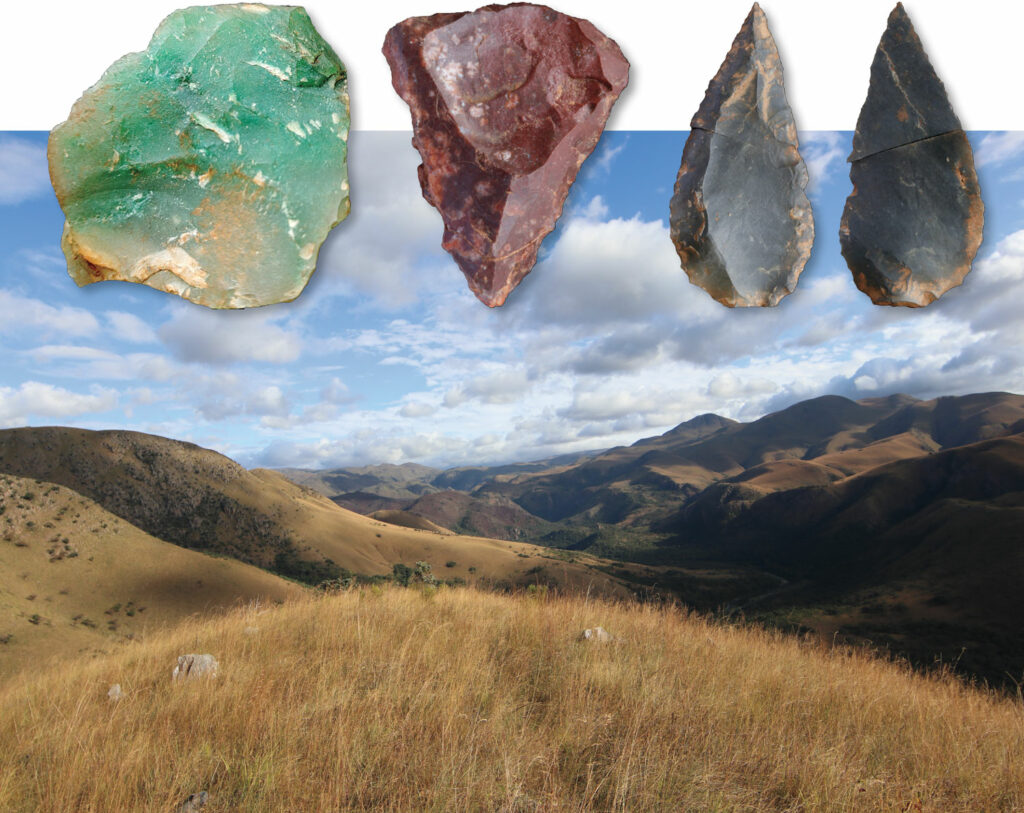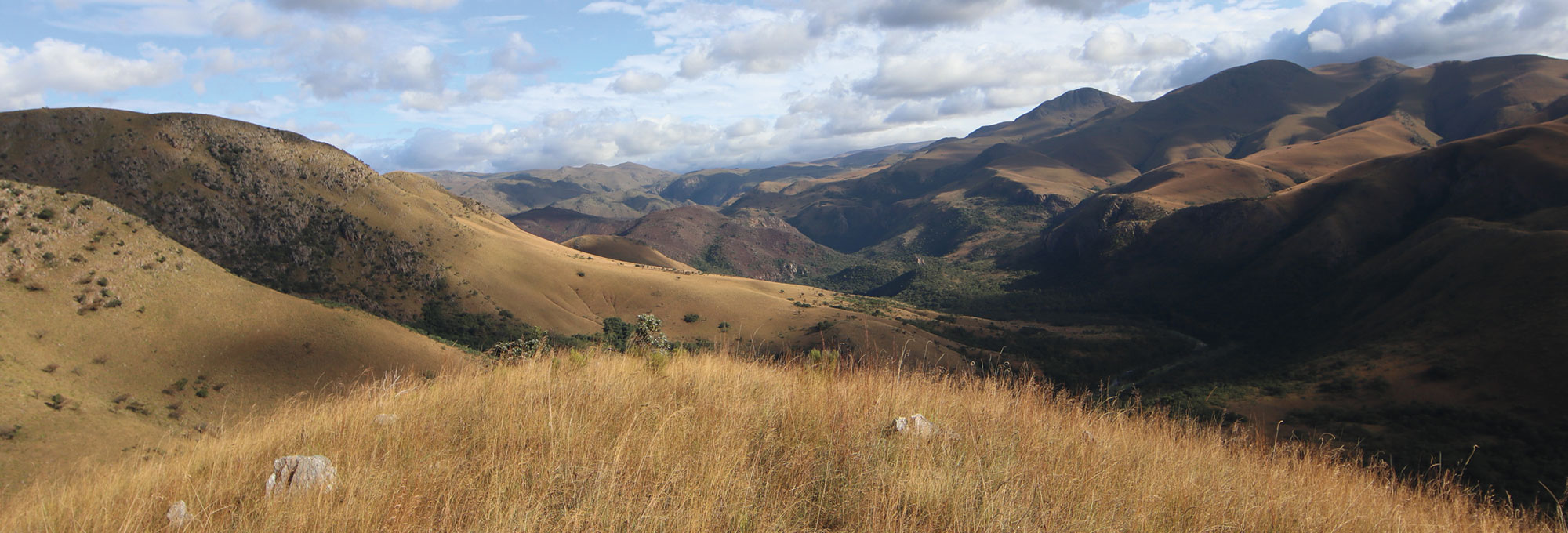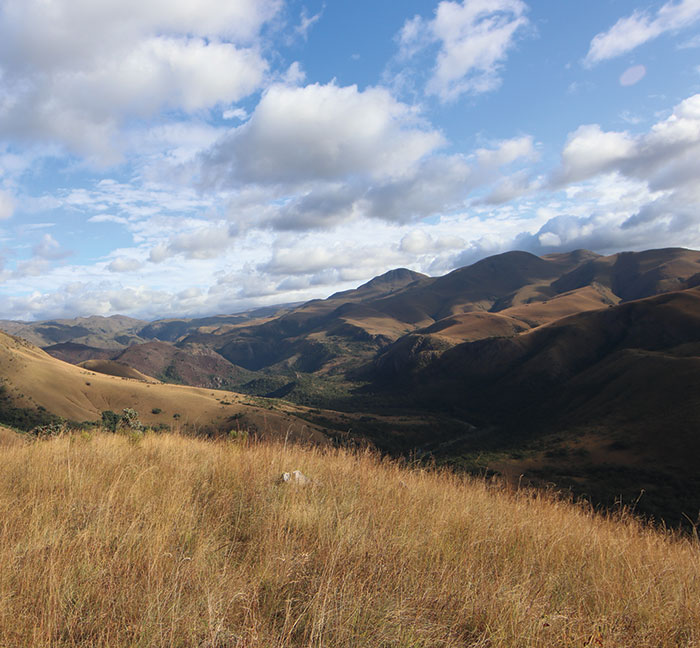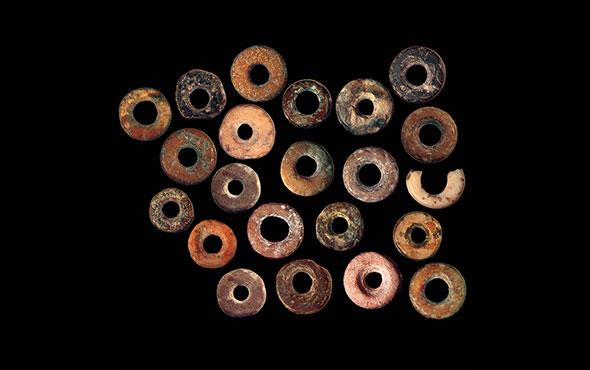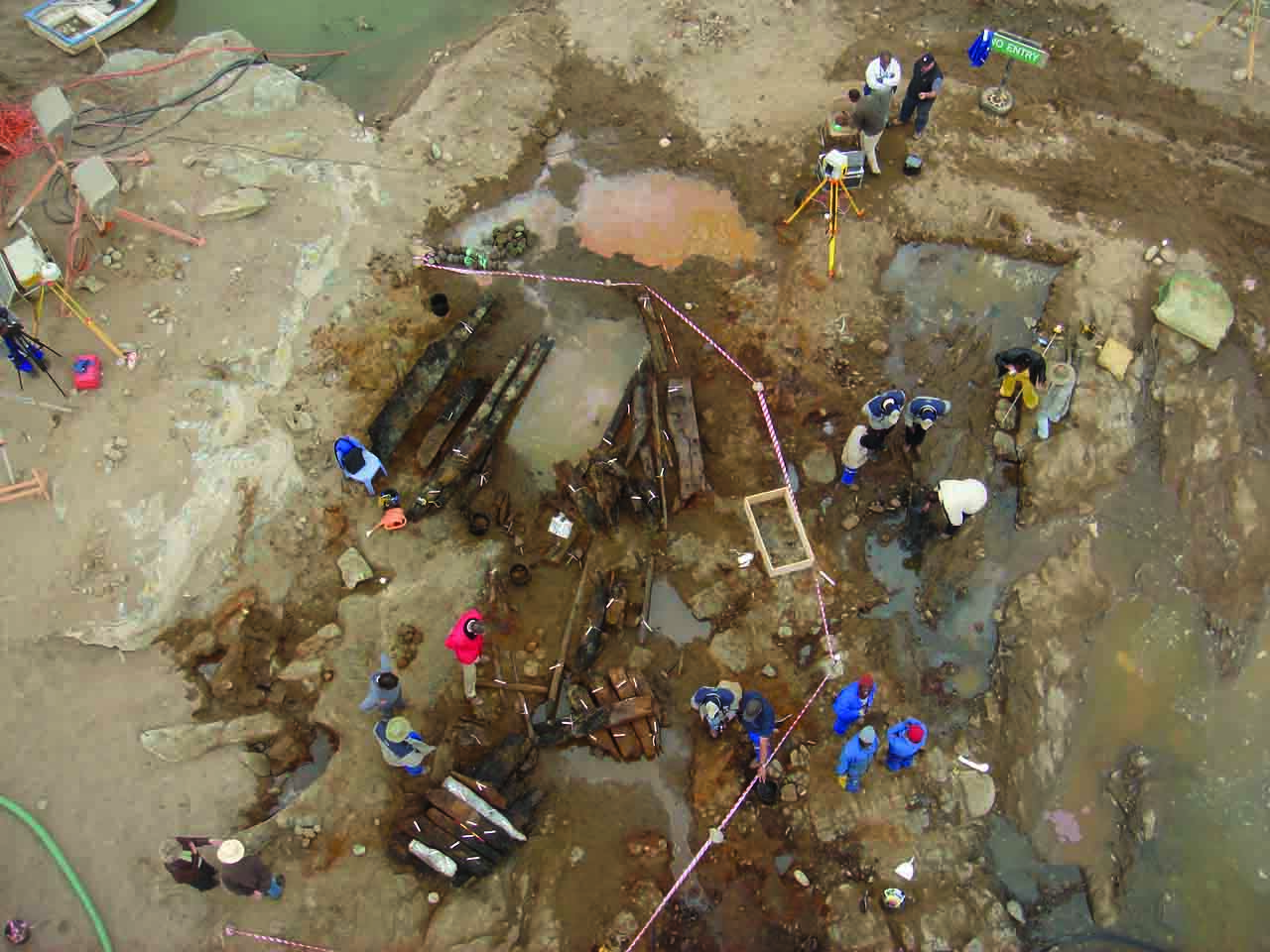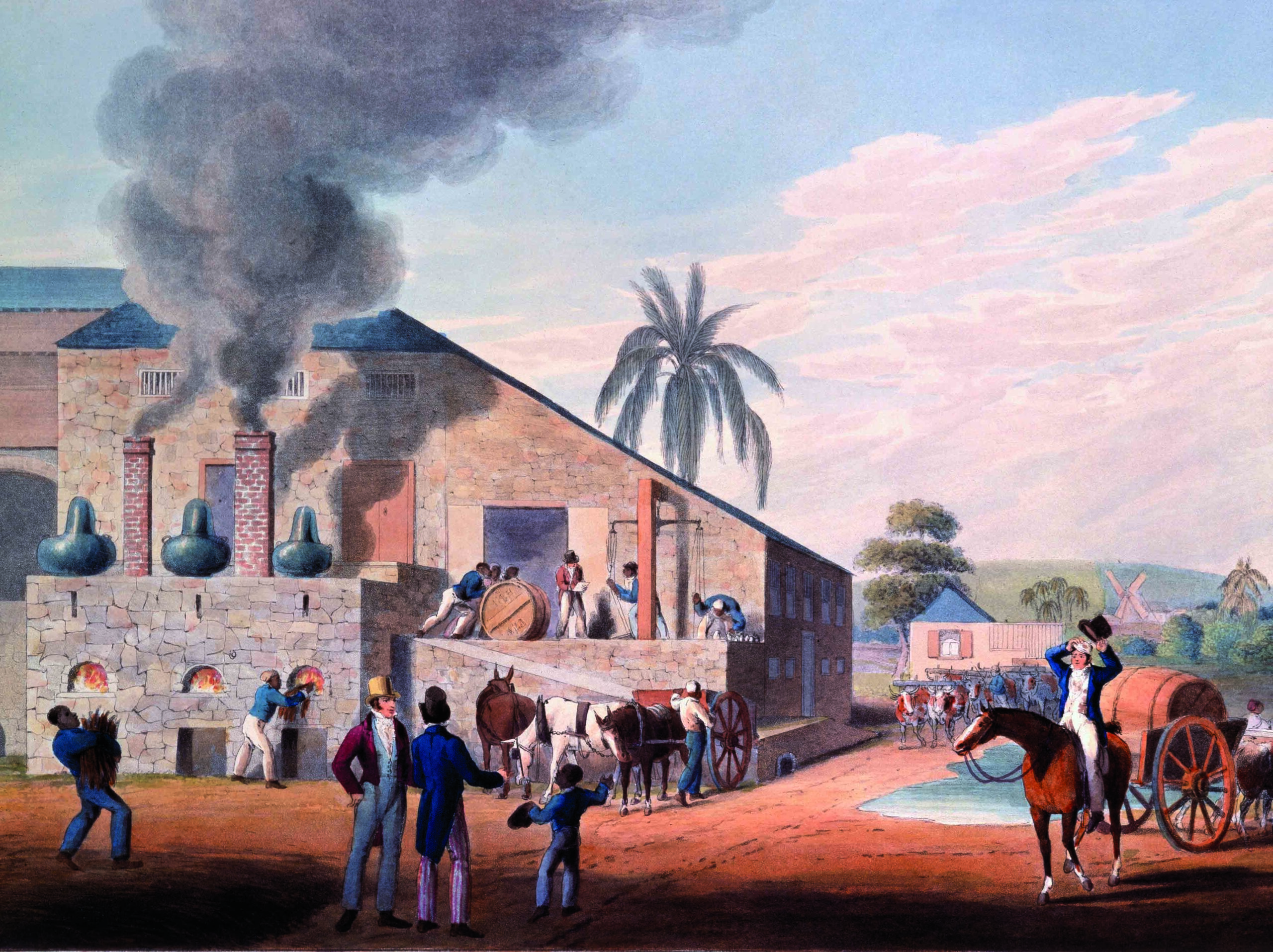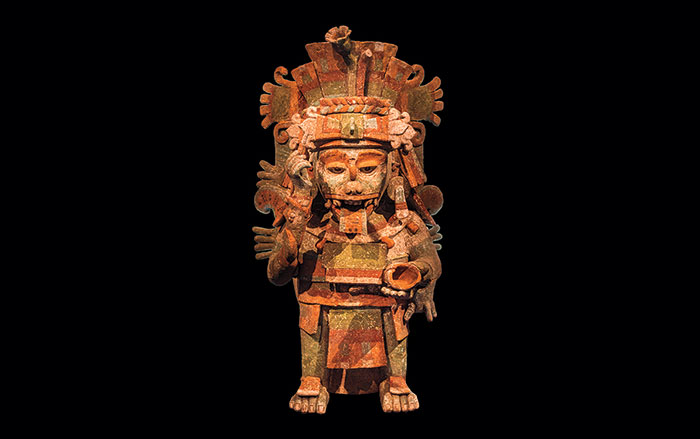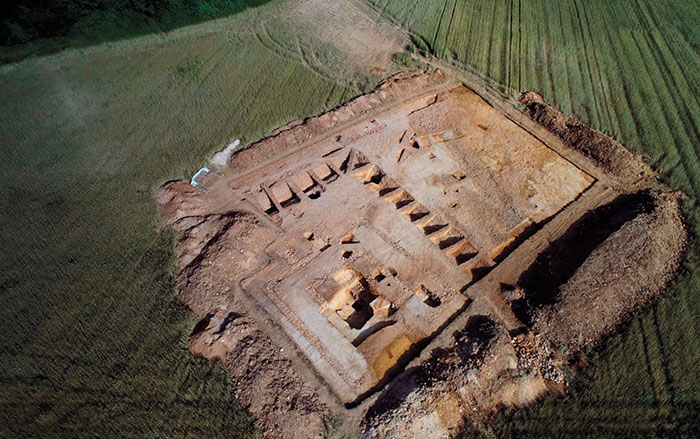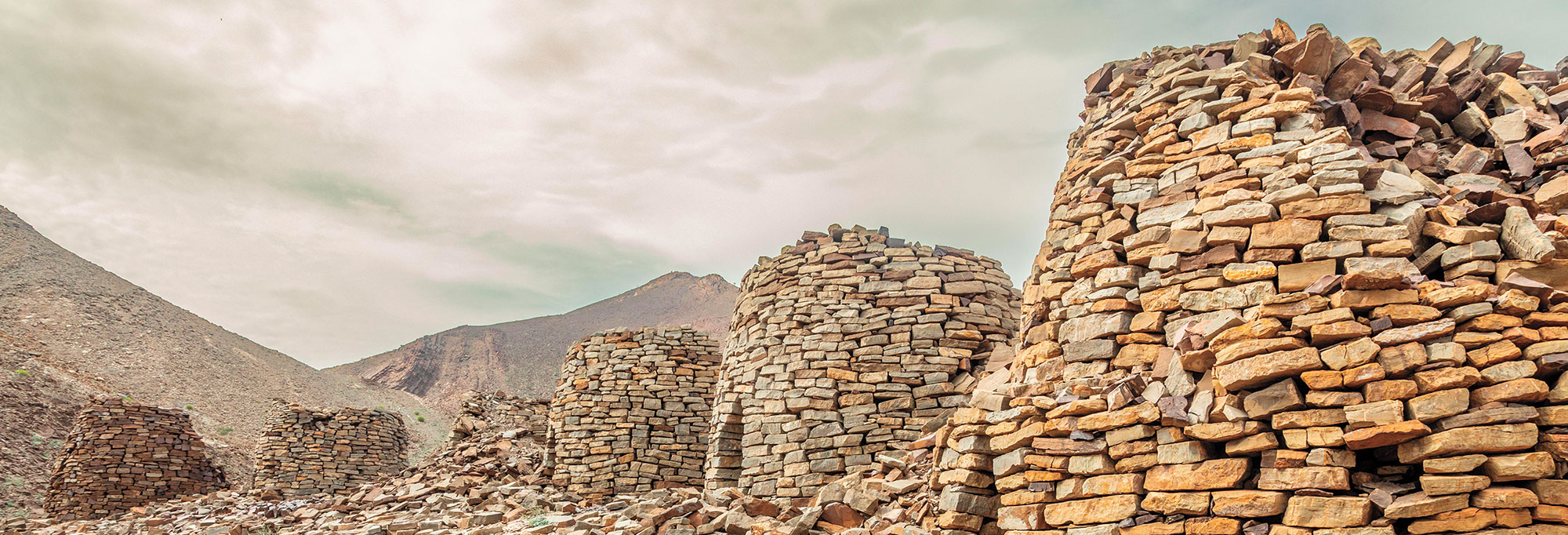As early as 40,000 years ago, some hunter-gatherers in southern Africa ventured long distances to procure special types of stone to make their tools. Although these groups primarily fashioned blades and scrapers from quartz, tools knapped from colorful green, red, and black varieties of chert have been excavated at sites in Eswatini. A team of researchers led by University of Tübingen archaeologist Gregor Bader surveyed the Mgwayiza Valley to locate the sources of stone used to make tools recovered at four of these sites. They identified natural outcrops of two types of chert—green chalcedony and red jasper—within 2.5 miles of each other. Using neutron activation analysis, the team confirmed that the geochemical fingerprints of the stone in the outcrops matched elements in the green and red chert tools. The precise source of the black chert has not been identified.
While some groups lived within a day’s hike of the outcrops, others would have had to travel up to 60 miles over rough terrain to reach these sources. “People either transported the raw materials in a single trip or kept them over longer periods and made tools out of them,” Bader says. Hunter-gatherers living farther from the outcrops, he says, may also have relied on exchange networks to obtain the stones. “I think this is indirect evidence that the materials held a certain value,” says Bader. He believes the stones’ vibrant colors might have been a factor in people’s changing preferences over time. Green chalcedony seems to have been especially prized for toolmaking until about 30,000 years ago. After that, craftspeople stopped using chalcedony and turned to red jasper as the preferred material.
